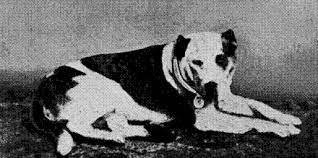Jack : A Brief History of Notable Dog
Dog American Canines, Civil War Tales, War Canines, and War Tales “Union Jack Mascot” Mascot Jack
The 1862 narrative of Jack’s life in Harper’s Weekly made him a well-known Civil War mascot. Jack served in the Confederate Army before joining the Union Army.
Before the Civil War, a stray bull terrier entered the Penn Avenue firehouse of the Niagara Volunteer Company in Pittsburgh. Initially, men overlooked and mistreated dogs. Someone fractured the dog’s leg, but others helped him recover. By outlasting a larger dog, the bull terrier acquired the respect of the firehouse’s strong guys. Jack, the dog, joined the group and responded to emergency calls.
Americans believe that northerners backed the Union and southerners supported the Confederacy during the American Civil War. Families, neighborhoods, and states were separated in both the North and South. Publications that backed one side were more likely to publish stories in favor of that side.
Jack, who became a Union supporter, appears to fit this description.
His Life
Jack’s first owner was a Virginia-based Confederate jailer.
Jack enlisted in the 102nd Pennsylvania Volunteers Regiment when the need for war volunteers arose. Jack immediately learnt the significance of the bugle calls. From August 1861 to March 1862, the regiment defended the District of Columbia. Following it, they engaged in other horrible conflicts. During each battle, Jack rushed to the front lines to assist the wounded and hunt for the dead. Jack would lead the men to a water source and collect small animals if they required food or water while marching.
Jack’s Mask
Near Fort Royal, the First Maryland regiment of the Union was defeated and surrendered. They were obstinate. They removed and divided their regimental banner before being seized so that the original flag would not fall into enemy hands.
Even when imprisoned, they exhibited valor. Three days later, as Union troops entered Winchester, Virginia, Confederates serenaded Stonewall Jackson with The Bonnie Blue Flag. Union soldiers sang The Celebrity Banner as they passed.
Also present was the new recruit who deserted his Confederate master to join the Union. In a November 1862 Harper’s Weekly story, Jack was described as a medium-sized ebony cat with a white chest and paws.
Two distinct groups of Union captives were separated. Officers went to a POW camp in Salisbury, North Carolina, while enlisted soldiers were transferred to Belle Island Prison in Richmond. Jack joined the police force.
Jack’s Reporter
After a prisoner swap, the reporter meets Jack in Hampton, Virginia. Fort Monroe was under Union authority despite being located on the southern peninsula of Virginia. The reporter’s opinion:
Jack was injured in battle. At Malvern Hill, he was shot in the neck and shoulder. Jack was saved and returned to the battlefield by regimental doctors. He was wounded less severely at Fredericksburg. Jack was twice seized by the Confederates. Once he escaped after being held captive for six hours, and the second or third time he was a prisoner of war for six months before being traded. Jack’s presence enthused and inspired fellow Union prisoners.
His demeanor is courteous and reticent with friends, yet vigilant and forceful with foes. Even though he was born in Secessia, he is fiercely loyal to the Union and abhors anything like a rebel. Many of our “conservative” and “neutral” Northern followers would do well to emulate him.
Dog-mascot Jack
He heard about Jack from officers:
The police instructed Jack to bark loudly if he discovered water when they were being taken to North Carolina and were thirsty.
This magnificent creature has been observed collecting chickens for them and bringing them back in its jaws, according to an eyewitness. Our unfortunate companions were literally starving to death when they were provided with only five crackers each man for five days without any meat.
An exhausted Union soldier was unable to continue. Jack stood with him till a cart arrived.
rolls are known
Jack was rumored to be familiar with all roll calls, but he only responded to the officers’. Following the assembly of his band, he sat next to the drummer.
The troop returned to Baltimore in 1862 in order to purchase a silver collar for their dog.
In 1863, the Regiment resumed active action, but no documents indicate whether Jack left or remained in Baltimore.
Many of Jack’s activities were accurately reported by the reporter, but she gave him political leanings he lacked. Owners of canines are aware that it is preferable to believe Jack got fond of Union soldiers or enjoyed better treats from them.
Jack was injured in battle. At Malvern Hill, he was shot in the neck and shoulder. Jack was saved and returned to the battlefield by regimental doctors. He was wounded less severely at Fredericksburg. Jack was twice seized by the Confederates. Once he escaped after being held captive for six hours, and the second time he was a prisoner of war for six months before being traded. Jack’s presence enthused and inspired fellow Union prisoners.
Jack was one of the numerous dogs who fought in the American Civil War. Read about Sallie or Harvey to learn about other dogs from this time period.






